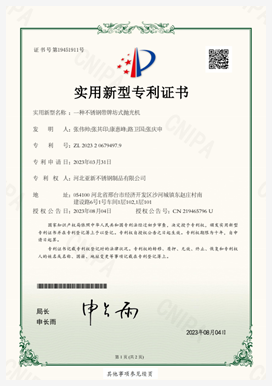binder reaper machine
The Binder Reaper Machine Revolutionizing Agriculture
The agricultural landscape has witnessed numerous technological advancements over the centuries, but few inventions have had as profound an impact as the binder reaper machine. This remarkable piece of equipment fundamentally transformed the way farmers harvested their crops, leading to increased efficiency, reduced labor costs, and ultimately, a boosted agricultural output that laid the groundwork for modern farming practices.
Historical Context
Before the invention of the binder reaper, harvesting crops was an intensely laborious and time-consuming process. Traditionally, farmers relied on hand-held tools like sickles and scythes to cut down grain. This method required a significant workforce and many hours, sometimes even days, to harvest a single field. The limitations of manual labor meant that farmers could only cultivate a limited amount of land, placing constraints on agricultural productivity and economic growth.
In response to these challenges, various inventors began exploring mechanical solutions in the early 19th century. One of the key figures in this innovation was Cyrus McCormick, whose 1831 invention of the mechanical reaper marked a significant turning point. However, while McCormick's reaper efficiently cut the grain, it did not bind it into manageable bundles, necessitating additional steps for farmers.
The Rise of the Binder Reaper
The binder reaper machine emerged as the solution to these challenges in the late 19th century. This machine not only reaped the crops but also bound them into sheaves, making it much easier for farmers to transport and store their harvests. The revolutionary design of the binder reaper included a cutting mechanism paired with a twine-tying device, allowing it to perform two essential tasks in one pass.
The impact of the binder reaper was immediate and profound. Within a short span, it significantly reduced the number of laborers required for harvesting operations. What once took a small army of hands could now be accomplished by just a few operators of the binder reaper, allowing farmers to focus their resources on other areas of production and management.
binder reaper machine

Efficiency and Economic Impact
The efficiency of the binder reaper machine cannot be overstated. Farmers could now harvest vast fields in a fraction of the time it once took with hand tools. This increased efficiency not only led to cost savings but also allowed for the possibility of expanding cultivated areas. The ability to harvest large amounts of grain quickly contributed to the growth of larger farms, fundamentally changing the agricultural landscape.
Furthermore, the increased productivity helped stabilize food supply and prices in burgeoning urban centers, supporting the rapid population growth of the 19th and early 20th centuries. With more efficient harvesting, farmers could produce surplus grains, which were essential for feeding an urbanizing society. This shift contributed to the overall economic development of nations, facilitating trade and commerce.
Technological Evolution
As technology continued to advance, so did the binder reaper machine itself. Early models were pulled by horses, but as tractors became commonplace in the mid-20th century, the design of the binder evolved to be tractor-mounted. This transition allowed for even greater efficiency and speed in harvesting operations. Innovations such as automatic binding mechanisms and improved cutting systems further enhanced the capabilities of binder reapers.
Today, modern combine harvesters have largely replaced traditional binder reapers by integrating the functions of reaping, threshing, and bundling all into one machine. However, the principle behind the binder reaper remains crucial in understanding the evolution of agricultural machinery.
Conclusion
The binder reaper machine stands as a testament to human ingenuity and its capacity to solve pressing challenges in agriculture. By significantly reducing labor needs and increasing efficiency, it not only transformed farming practices but also had a lasting impact on society and economy. The legacy of the binder reaper continues to influence modern agriculture, reminding us of the essential role that technology plays in shaping our agricultural practices and supporting global food security. As we look to the future of farming, the lessons learned from innovations like the binder reaper will undoubtedly guide the way toward even greater advancements in sustainability and efficiency.
Latest news
-
When to Upgrade Your Old Forage HarvesterNewsJun.05,2025
-
One Forage Harvester for All Your NeedsNewsJun.05,2025
-
Mastering the Grass Reaper MachineNewsJun.05,2025
-
How Small Farms Make Full Use of Wheat ReaperNewsJun.05,2025
-
Harvesting Wheat the Easy Way: Use a Mini Tractor ReaperNewsJun.05,2025
-
Growing Demand for the Mini Tractor Reaper in AsiaNewsJun.05,2025
